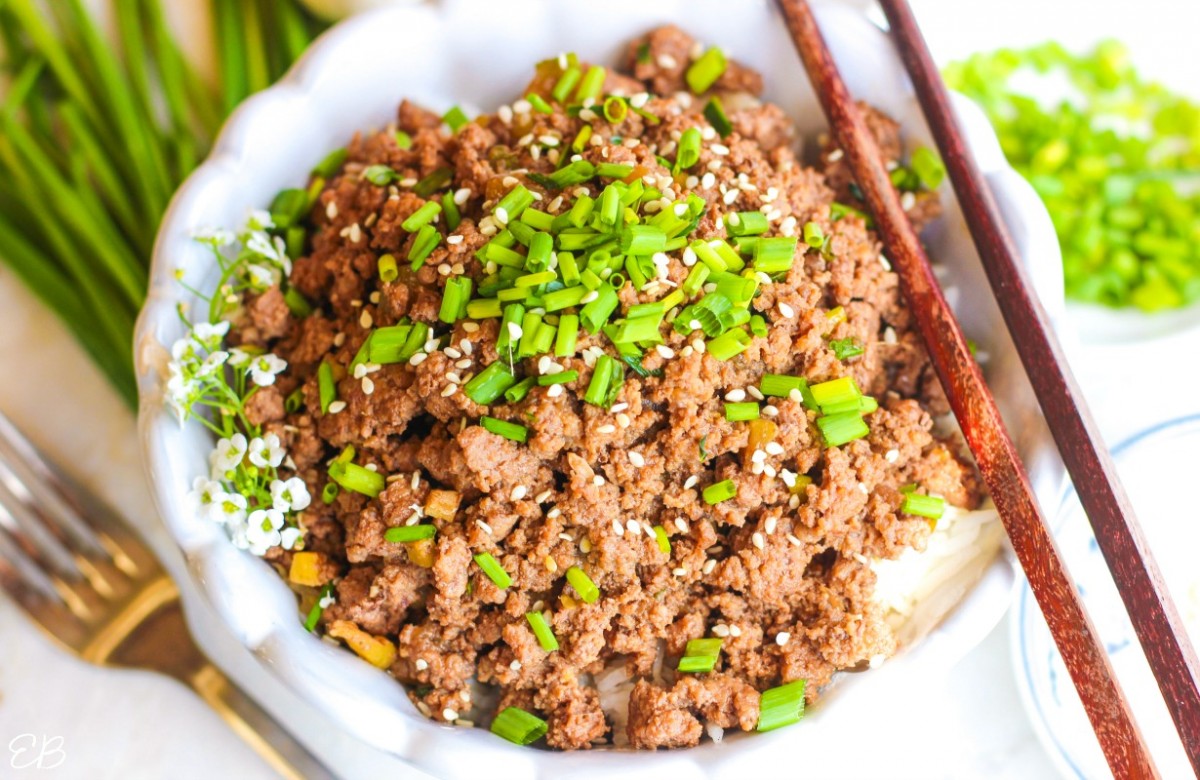Imagine savoring the vibrant flavors of your favorite Asian takeout dishes without the guilt! This culinary adventure unveils a treasure trove of keto-friendly recipes, meticulously crafted to satisfy those intense cravings. Picture sizzling stir-fries bursting with colorful vegetables and lean protein, aromatic sauces that tantalize the taste buds, and noodle alternatives that perfectly mimic the texture of traditional dishes. Prepare to embark on a delicious journey where healthy eating meets authentic Asian cuisine, transforming your keto experience into a flavorful escape.
We’ll explore how to adapt beloved Asian classics, from General Tso’s chicken to Pad Thai, using clever substitutions and innovative techniques. Discover the secrets to creating authentic Asian-inspired sauces using coconut aminos and low-carb sweeteners, and learn how to master the art of preparing keto-friendly “noodles” with shirataki or zucchini. This guide provides detailed, step-by-step recipes, complete with high-quality images and helpful tips to ensure your success in the kitchen. Get ready to tantalize your taste buds and achieve your dietary goals without compromise.
Popular Asian-Inspired Keto Dishes

Embark on a culinary adventure with these delicious and satisfying keto-friendly adaptations of beloved Asian takeout favorites. By making smart substitutions, you can enjoy the vibrant flavors of Asian cuisine without sacrificing your ketogenic lifestyle. These recipes emphasize low-carb vegetables, healthy fats, and satisfying protein sources, ensuring a flavorful and fulfilling meal.
Keto-Friendly Asian Dishes and Substitutions
Many traditional Asian dishes can be easily adapted for a ketogenic diet. The key is to swap out high-carb ingredients for low-carb alternatives while maintaining the authentic taste. Below are five popular examples, showcasing the transformative power of keto-friendly substitutions.
- Traditional Kung Pao Chicken: Typically features chicken, peanuts, vegetables (like peppers and onions), and a sauce thickened with cornstarch. Keto Adaptation: Substitute cauliflower rice for regular rice, omit peanuts (or use a small amount of sugar-free peanut butter), and thicken the sauce with xanthan gum or coconut flour.
- Traditional Beef and Broccoli: Usually includes beef, broccoli, and a soy sauce-based stir-fry sauce. Keto Adaptation: Use plenty of broccoli and other low-carb vegetables like bok choy or shirataki noodles instead of rice or noodles. Ensure your soy sauce is low in sugar or use a keto-friendly alternative like coconut aminos.
- Traditional Pad Thai: This classic dish is made with rice noodles, shrimp or chicken, tofu, peanuts, and a sweet and sour sauce. Keto Adaptation: Replace rice noodles with shirataki noodles or zucchini noodles. Reduce or eliminate the sugar in the sauce, and use coconut aminos instead of soy sauce. Omit or limit peanuts.
- Traditional Egg Rolls: Traditional egg rolls are often filled with high-carb ingredients like rice noodles and shredded carrots. Keto Adaptation: Use low-carb alternatives such as finely shredded cabbage, mushrooms, and finely chopped pork or shrimp. Wrap the filling in lettuce leaves for a keto-friendly “egg roll” wrap.
- Traditional Sushi: Traditional sushi often includes rice, which is a high-carb ingredient. Keto Adaptation: Opt for sushi made with cauliflower rice or kelp noodles as a base. Focus on fillings like avocado, cucumber, and seafood.
Keto Asian Stir-Fry Variations
The versatility of stir-fries makes them perfect for keto adaptation. Here are three variations showcasing different vegetable combinations and protein sources. Imagine the vibrant colors and textures!
- Shrimp and Asparagus Stir-Fry: Picture succulent shrimp sautéed with tender asparagus spears, tossed in a fragrant garlic-ginger sauce. The vibrant green asparagus contrasts beautifully with the pink shrimp against a backdrop of sesame oil.
- Chicken and Broccoli Stir-Fry with Shirataki Noodles: This hearty stir-fry combines tender chicken with crisp broccoli florets and satisfying shirataki noodles, creating a filling and low-carb meal. The shirataki noodles provide a textural element similar to traditional noodles, but with significantly fewer carbs.
- Beef and Bok Choy Stir-Fry with Cauliflower Rice: Imagine tender slices of beef stir-fried with crisp bok choy leaves and fluffy cauliflower rice. The rich savory flavors of the beef are complemented by the slightly bitter notes of the bok choy, creating a balanced and delicious dish.
Macronutrient Comparison: Traditional vs. Keto Asian Dishes
This table compares the macronutrient profiles of three traditional Asian dishes and their keto-friendly counterparts, highlighting the significant reduction in carbohydrates. Note that these values are approximate and can vary depending on specific ingredients and portion sizes.
| Dish | Fat (g) | Protein (g) | Carbs (g) |
|---|---|---|---|
| Traditional Pad Thai (1 serving) | 10 | 15 | 40 |
| Keto Pad Thai (1 serving) | 20 | 20 | 5 |
| Traditional Fried Rice (1 serving) | 15 | 10 | 50 |
| Keto Cauliflower Fried Rice (1 serving) | 25 | 15 | 5 |
| Traditional Beef and Broccoli (1 serving) | 12 | 25 | 20 |
| Keto Beef and Broccoli (1 serving) | 20 | 30 | 5 |
Keto-Friendly Asian Sauces and Marinades
Unlocking the vibrant flavors of Asian cuisine while adhering to a ketogenic diet requires clever substitutions and a deep understanding of flavor profiles. The key lies in replacing traditional high-carb ingredients with keto-friendly alternatives that deliver the same umami depth and satisfying sweetness. This section explores three versatile sauces, highlighting the crucial role of coconut aminos and low-carb sweeteners in achieving authentic Asian tastes without compromising your dietary goals.
The following recipes demonstrate the versatility of coconut aminos and low-carb sweeteners, allowing for adjustments to suit various dishes, from rich marinades to zesty dipping sauces. Each recipe provides a foundation that can be customized to your personal preferences.
Keto Teriyaki Sauce
This rich and savory sauce captures the essence of classic teriyaki, substituting soy sauce with coconut aminos for a low-carb, gluten-free alternative. The sweetness is provided by erythritol or monk fruit, offering a clean sweetness without the carb spike.
- Ingredients: 1/4 cup coconut aminos, 2 tablespoons erythritol or monk fruit sweetener, 1 tablespoon rice vinegar, 1 tablespoon sesame oil, 1 clove garlic (minced), 1 teaspoon grated ginger, 1/2 teaspoon ground black pepper.
- Preparation: Whisk together all ingredients in a small saucepan. Bring to a simmer over medium heat, stirring constantly, until slightly thickened (about 2-3 minutes). Remove from heat and let cool slightly before using. This sauce is ideal for glazing grilled chicken, fish, or tofu, or as a marinade for beef or pork.
Keto Sweet and Sour Sauce
This vibrant sauce offers a delightful balance of sweet and tangy flavors, perfect for coating keto-friendly stir-fries or dipping spring rolls. The use of coconut aminos provides the salty umami base, while a blend of low-carb sweeteners and rice vinegar delivers the necessary sweet and sour notes. Imagine the glossy, deep red hue of the sauce coating succulent pieces of chicken or shrimp, a visual testament to the successful fusion of flavors and textures.
- Ingredients: 1/4 cup coconut aminos, 2 tablespoons erythritol or monk fruit sweetener, 2 tablespoons rice vinegar, 1 tablespoon tomato paste, 1 tablespoon pineapple juice (ensure low sugar content), 1 teaspoon ginger (grated), 1/2 teaspoon red pepper flakes (optional).
- Preparation: Combine all ingredients in a small saucepan. Bring to a simmer over medium heat, stirring constantly until slightly thickened (approximately 5 minutes). Adjust sweetness and acidity to taste. This sauce works well as a marinade or a finishing sauce for stir-fries.
Keto Peanut Sauce
This creamy and nutty sauce is a keto-friendly twist on a classic. The richness comes from the peanut butter, while coconut aminos and a touch of lime juice provide a savory and tangy counterpoint. The addition of a small amount of sweetener balances the flavors, creating a harmonious and irresistible sauce. Picture the luscious, creamy texture clinging to perfectly cooked noodles (zoodles) or coating crispy tofu, a culinary experience that’s both satisfying and guilt-free.
- Ingredients: 1/2 cup creamy peanut butter (ensure no added sugar), 2 tablespoons coconut aminos, 2 tablespoons lime juice, 1 tablespoon water (or more, to adjust consistency), 1 tablespoon erythritol or monk fruit sweetener (optional), 1/4 teaspoon garlic powder.
- Preparation: Whisk together all ingredients in a medium bowl until smooth and creamy. Add more water if a thinner consistency is desired. This sauce is excellent for dipping vegetables, chicken satay, or as a dressing for salads.
The Role of Coconut Aminos and Low-Carb Sweeteners
Coconut aminos are a crucial ingredient in creating authentic Asian flavors within a ketogenic framework. They provide the characteristic umami and salty depth typically associated with soy sauce, without the high carbohydrate content. Low-carb sweeteners, such as erythritol and monk fruit, offer a clean sweetness that doesn’t negatively impact blood sugar levels, allowing for the creation of balanced and flavorful sauces without sacrificing ketogenic principles. These sweeteners, while having different sweetness levels and aftertastes, can be easily interchanged depending on individual preference. The careful balance of these ingredients is key to replicating the complexity and depth of traditional Asian sauces.
Adjusting Sauce Consistency and Flavor Profiles
The consistency of these sauces can be easily adjusted by adding more water or coconut milk (full-fat) for a thinner sauce, or by simmering them longer for a thicker, more syrupy consistency. Flavor profiles can be customized by adding more or less of a particular ingredient. For example, increasing the amount of ginger will intensify the spiciness, while adding more lime juice will heighten the tanginess. Experimenting with different spices and herbs, such as chili garlic sauce, lemongrass, or kaffir lime leaves, can create unique and exciting flavor combinations, catering to individual tastes and culinary preferences. The versatility of these base recipes allows for endless exploration and customization.
This exploration of Asian-inspired keto recipes has revealed a world of culinary possibilities, proving that healthy eating doesn’t have to sacrifice flavor or satisfaction. By embracing creative substitutions and mastering the art of keto-friendly sauces, you can enjoy the vibrant tastes of your favorite Asian takeout dishes while staying true to your dietary goals. So, don your chef’s hat, gather your ingredients, and embark on this exciting culinary journey. The delicious results await, promising a satisfying and guilt-free indulgence.
FAQ Resource
Can I use regular soy sauce in keto Asian recipes?
No, regular soy sauce is high in carbohydrates. Use coconut aminos or a low-sodium tamari alternative instead.
What are the best keto-friendly noodle substitutes?
Shirataki noodles and zucchini noodles are excellent choices, offering a satisfying texture similar to traditional noodles.
Are there any keto-friendly Asian desserts?
Yes! Consider exploring keto-friendly versions of Asian desserts using coconut flour, almond flour, and low-carb sweeteners.
How can I make my keto Asian dishes more flavorful?
Experiment with fresh herbs, spices, and aromatics like ginger, garlic, and chili to enhance the flavor profiles of your dishes.


